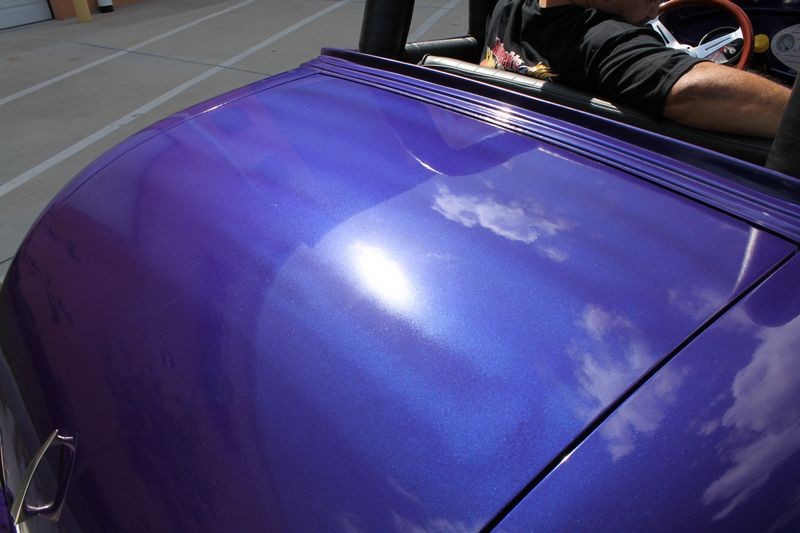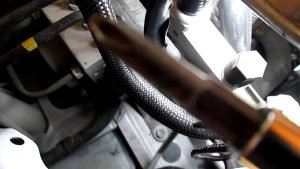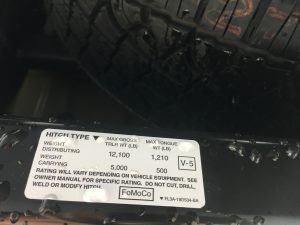To avoid tiger stripes when spray painting, use broad, even strokes and maintain a consistent distance from the surface. Achieving a smooth and flawless finish when spray painting can be challenging.
Tiger stripes, which are uneven lines or streaks that appear on the painted surface, can ruin the overall look. However, there are steps you can take to prevent this issue. By using broad, even strokes and ensuring a consistent distance from the surface, you can avoid tiger stripes.
Additionally, proper preparation and cleaning of the surface, as well as using the correct spray painting technique, can also help you achieve a professional-looking finish. We will discuss these tips and techniques in detail, allowing you to achieve excellent results with your spray painting projects.
Contents
- What Are Tiger Stripes?
- Causes Of Tiger Stripes
- Tips To Avoid Tiger Stripes
- Common Mistakes That Lead To Tiger Stripes
- Step-By-Step Guide To Spray Painting Without Tiger Stripes
- Additional Tips And Tricks
- Can Using Cerakote or Powder Coat Help Avoid Tiger Stripes When Spray Painting?
- Frequently Asked Questions On How To Avoid Tiger Stripes When Spray Painting
- Conclusion
What Are Tiger Stripes?
Tiger stripes are unsightly streaks or lines that can appear during spray painting. They occur when the paint is applied unevenly, resulting in visible variations in color and texture. These stripes can detract from the overall finish of the project and make it look unprofessional.
To avoid tiger stripes, it’s important to properly prepare the surface by cleaning and sanding it, ensuring a smooth and even base. Additionally, choosing the right type and quality of paint is crucial. Applying thin, even coats with a steady and consistent motion will help prevent tiger stripes.
It’s also important to maintain the recommended distance between the spray nozzle and the surface being painted. Finally, taking the time to adequately blend the paint and using professional techniques, such as crosshatching or feathering, can further minimize the risk of tiger stripes.
By following these steps, you can achieve a flawless finish and avoid the frustration of dealing with tiger stripes in your spray painting projects.

Credit: www.autogeekonline.net
Causes Of Tiger Stripes
Tiger stripes when spray painting can be avoided by ensuring adequate surface preparation. This includes cleaning, sanding, and priming the surface before applying paint. Additionally, using the correct spray technique is crucial to achieve a smooth and even finish. The spray should be applied in a steady and consistent motion, evenly covering the surface.
Another common cause of tiger stripes is using the wrong type of paint or incorrect thinning ratio. It is important to choose a paint that is suitable for the specific project and follow the recommended thinning instructions. By following these guidelines, you can prevent the occurrence of tiger stripes and achieve a professional-looking spray paint finish.
Tips To Avoid Tiger Stripes
To avoid tiger stripes when spray painting, proper surface preparation is crucial. Start by cleaning and sanding the surface for a smooth finish. If needed, apply a primer to ensure better adhesion. Choose the right spray technique, maintaining the correct distance and angle from the surface.
Overlapping your strokes evenly helps to prevent streaks. Using the correct paint and thinning ratio is essential – this involves understanding paint types and their compatibility. Thinning the paint properly ensures a smooth application without tiger stripes. Remember, following these steps will help you achieve a flawless spray paint finish.
Common Mistakes That Lead To Tiger Stripes
Tiger stripes can be avoided by avoiding common mistakes. Rushing the painting process leads to flaws. Applying too much paint at once also causes tiger stripes. Environmental factors like temperature and humidity must not be ignored. By following these guidelines, you can prevent tiger stripes when spray painting.
Step-By-Step Guide To Spray Painting Without Tiger Stripes
To avoid tiger stripes when spray painting, start by preparing the surface. Clean and remove any dust or debris and sand the surface for a smooth base. Next, choose the right tools and materials. Select a suitable spray gun and nozzle, and use high-quality paint and thinners.
Set up a well-ventilated workspace and protect surrounding objects from overspray. Practice your technique by testing on a scrap piece or practice board, and get comfortable with the spray gun and its settings. When applying the paint, start with a light, even coat and build up layers gradually.
Troubleshoot and fix issues by identifying and addressing potential tiger stripe problems, and make necessary adjustments to your technique or equipment. Follow these steps to achieve a flawless spray painted finish without tiger stripes.
Additional Tips And Tricks
When spray painting, you can avoid tiger stripes by using a spray booth or tent. These tools provide better control and containment, preventing overspray and ensuring even coverage. Another essential tip is to clean and maintain your spray equipment properly to prevent clogs and inconsistencies.
Regularly inspect and replace any worn or damaged parts. If you’re struggling to achieve the desired results, don’t hesitate to seek professional help. They have the expertise and knowledge to troubleshoot and provide solutions to any spray painting issues you may encounter.
Following these steps will help you achieve smooth and flawless finishes without any tiger stripes.
Can Using Cerakote or Powder Coat Help Avoid Tiger Stripes When Spray Painting?
When it comes to avoiding tiger stripes when spray painting, the choice between cerakote or powder coat comparison becomes important. Both options provide a durable finish that can help prevent tiger stripes from appearing on the surface. However, the specific method of application and the type of material being sprayed can also play a role in avoiding this issue.
Frequently Asked Questions On How To Avoid Tiger Stripes When Spray Painting
What Causes Tiger Stripes In Spray Paint?
Spray paint tiger stripes occur due to uneven application, improper technique, or clogged nozzle.
How Do You Prevent Tiger Stripes When Spray Painting Furniture?
To prevent tiger stripes when spray painting furniture, follow these steps: – Clean and sand the surface thoroughly before painting. – Use a high-quality spray paint and shake it well before applying. – Spray in light, even strokes, keeping the can at a consistent distance from the furniture.
– Allow each coat to dry completely before applying additional coats.
How Do You Prevent Lines When Spray Painting?
To prevent lines when spray painting, follow these guidelines: 1. Use even strokes and maintain a consistent distance from the surface. 2. Apply thin coats to avoid buildup and ensure smooth coverage. 3. Allow adequate drying time between coats to prevent streaks.
4. Consider using a primer or sanding the surface beforehand for better adhesion and smoother results.
How Do You Spray Paint Without Streaks?
To spray paint without streaks, follow these tips: 1. Prepare the surface by cleaning and sanding it beforehand. 2. Use a high-quality spray paint and shake it well before applying. 3. Maintain a consistent distance and speed while spraying to achieve even coverage.
4. Apply multiple thin coats instead of one thick coat to avoid streaks and allow for drying in between.
Conclusion
To ensure smooth and flawless spray painting without any tiger stripes, it is crucial to follow a few key steps. First, proper surface preparation is essential, including cleaning and sanding the material. Secondly, choosing the right spray gun and nozzle size for the project is vital.
Adjusting the spray pattern and pressure will help achieve an even coat. Additionally, using high-quality paint and ensuring it is properly mixed will result in a professional finish. It is equally important to maintain consistent speed and distance while spraying to avoid build-up and tiger stripes.
Lastly, practice makes perfect, so take the time to experiment and refine your technique. By following these guidelines, you can confidently achieve a smooth and flawless finish in your spray painting projects.
Affiliate Disclosure: As an Amazon Associate, I earn from qualifying purchases made through links on this site.










